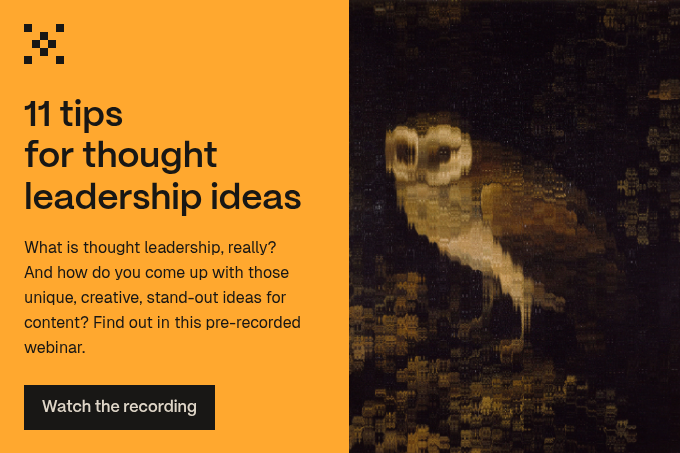‘The master has failed more times than the beginner has even tried,’ observed writer and illustrator Stephen McRanie.
Yet that word – ‘failure’ – seems to strike so much dread into the hearts of anyone aiming for a goal, particularly in the world of sales, that we have forgotten that it is a fundamental part of success.
In fact, learning from lost deals and handling rejection can be the fuel we need to hone our sales strategy to win bigger and better next time.
Embracing ‘no’ on the path to growth
So your prospect went with another provider. So that big deal went south. So you faltered during a crucial sales pitch. So they said ‘no’. So what?
Getting things ‘wrong’ is how we move towards getting things right.
When we’re babies learning to walk, we have to fall down first before we figure out how to stay upright. When we’re learning to drive, we have to stall the car plenty of times before we pass our test and get our licence. When we’re learning any new skill, or reaching for any new goal, until we get to the desired destination every step along the path could, in some sense, be considered a failure. If we are uncertain of the outcome of an action, unsure that we’re going to succeed, or shaken by past failures, we can become paralysed by fear. We give up before we’ve even tried.
But failure isn’t the end. And it certainly doesn’t deserve all of its negative connotations.
The landscape of rejection
Speak to anyone who works in sales or new business, and you’ll learn that rejection and the word ‘no’ are the landscape, and that ‘yes’ is the exception. But you can’t get to ‘yes’ until you’ve journeyed through plenty of ‘nos’, with each offering something useful that can help us on our way.
To harness this perspective as a tool for growth requires a mindset shift. But that’s easier said than done, especially considering the complex psychological relationship that most humans have with failure. Studies have shown that consistent rejection, failure, or negative feedback can lead to reduced performance in the future, an increased sense of inadequacy, and even anxiety and depression.
Outcomes like these are perfectly natural, but aren’t absolute. There are tools and practices that we can use to change our emotional response to failure for our benefit.
The practice of improvement
‘I like to see my role as helping people solve their problems,’ says Mark Kendall, Specialist Account Executive at Articulate Marketing. ‘But not everyone has a problem I can solve, so I just remind myself it's not personal and move on. It’s another call closer to “yes”.’
To fully embrace the power of failure requires the application of two Japanese concepts – Shoshin and Kaizen. Borrowed from Zen Buddhism, Shoshin literally translates as ‘the beginner's mind’ – an openness and eagerness to learn, to make space to get better. And then there’s Kaizen, which is the practice of continuous improvement. Both of these concepts reinforce one simple lesson – if you think you know it all, there’s little room to learn anything new.
Tools and practices like these can help us approach failure with a sense of openness and emotional detachment. And by doing so we can turn every rejection and setback into something valuable and useful.
‘I think we naturally tend to catastrophise a lot when hearing the word “no”,’ says James Dhakal, Articulate’s Senior Growth Specialist. ‘But it can be used as a positive learning experience, showing us where we can improve and better our own processes.’
Feedback is a gift
Here at Articulate Marketing, the power of ‘no’ is embraced across the business, not just in sales. When preparing pitches, visual designs or websites for clients, everything is feedback, and anything that isn’t a clear ‘yes’ is a gift. These gifts allow us to iterate, improve and refine our processes, our offerings, or the specific piece of work that we’re preparing. They drive innovation, fuel creativity and empower us to go beyond what we’ve done before.
Even if today’s ‘no’ doesn’t come with actionable insight, it still offers us a window into ourselves. It shows us where we are resilient, where we need to work harder, or where we need to show ourselves a little more compassion.
And compassion is crucial, because embracing failure, catalysing the power of ‘no’, and practising kaizen or shoshin – or whatever you want to call it – can be hard work. It requires energy, and it drains batteries. Time to rest and reflect is absolutely necessary.
‘I try to adopt the mindset of “It’ll always get better,”’ says James. ‘I’ll talk about the experience with colleagues and make it a positive thing. And then I’ll focus on the things that make me happy.’
Mark agrees. ‘Rest and reset usually does it for me,’ he says. ‘Taking time to reflect on where you could have improved and put it into action tomorrow.’
‘No’ is not the final chapter. Failure is not a setback; it’s a sales strategy.
In short, obstacles are not the end of the road. Instead, such things are the road. They show us the way to success and are a necessary part of achieving that success. And for our sales team, they show way to a stronger future for the business, and the clients we are proud to serve.
.jpg?width=100&height=100&name=Me%20on%20white%20background%20(2).jpg)
.jpg?width=64&height=64&name=Me%20on%20white%20background%20(2).jpg) Posted by
Chris Brock
Posted by
Chris Brock






